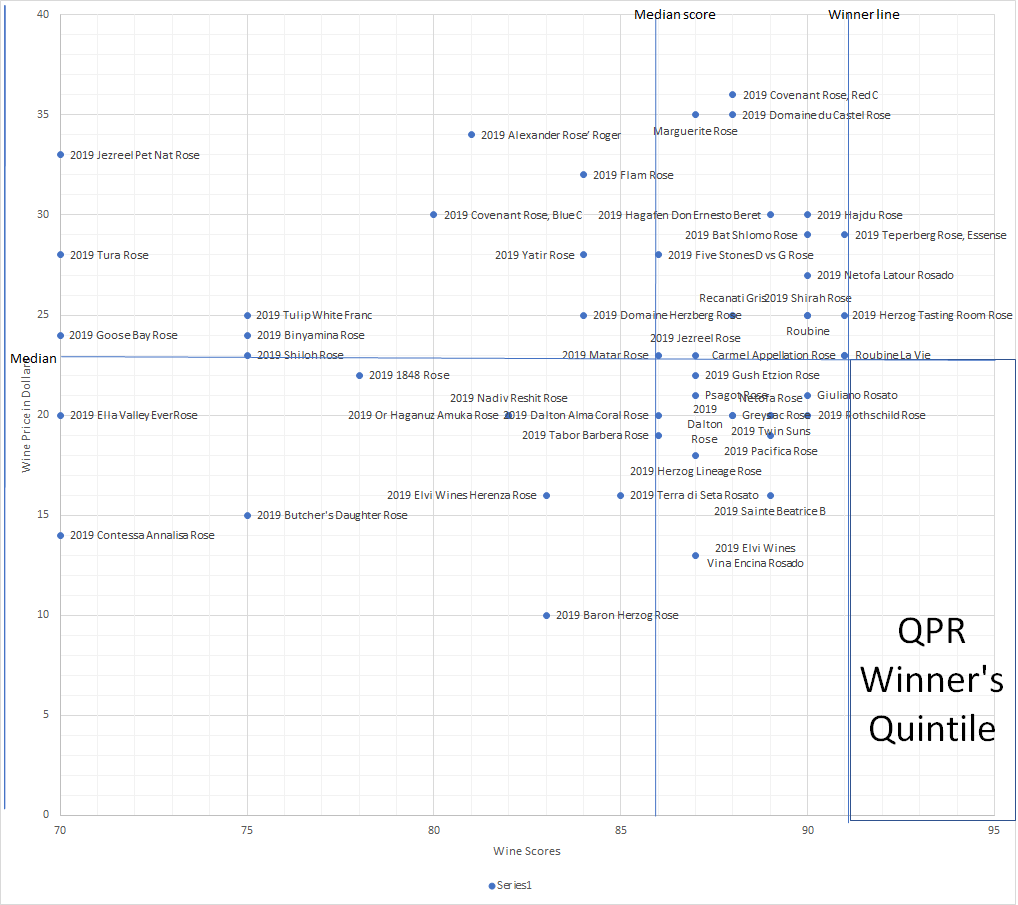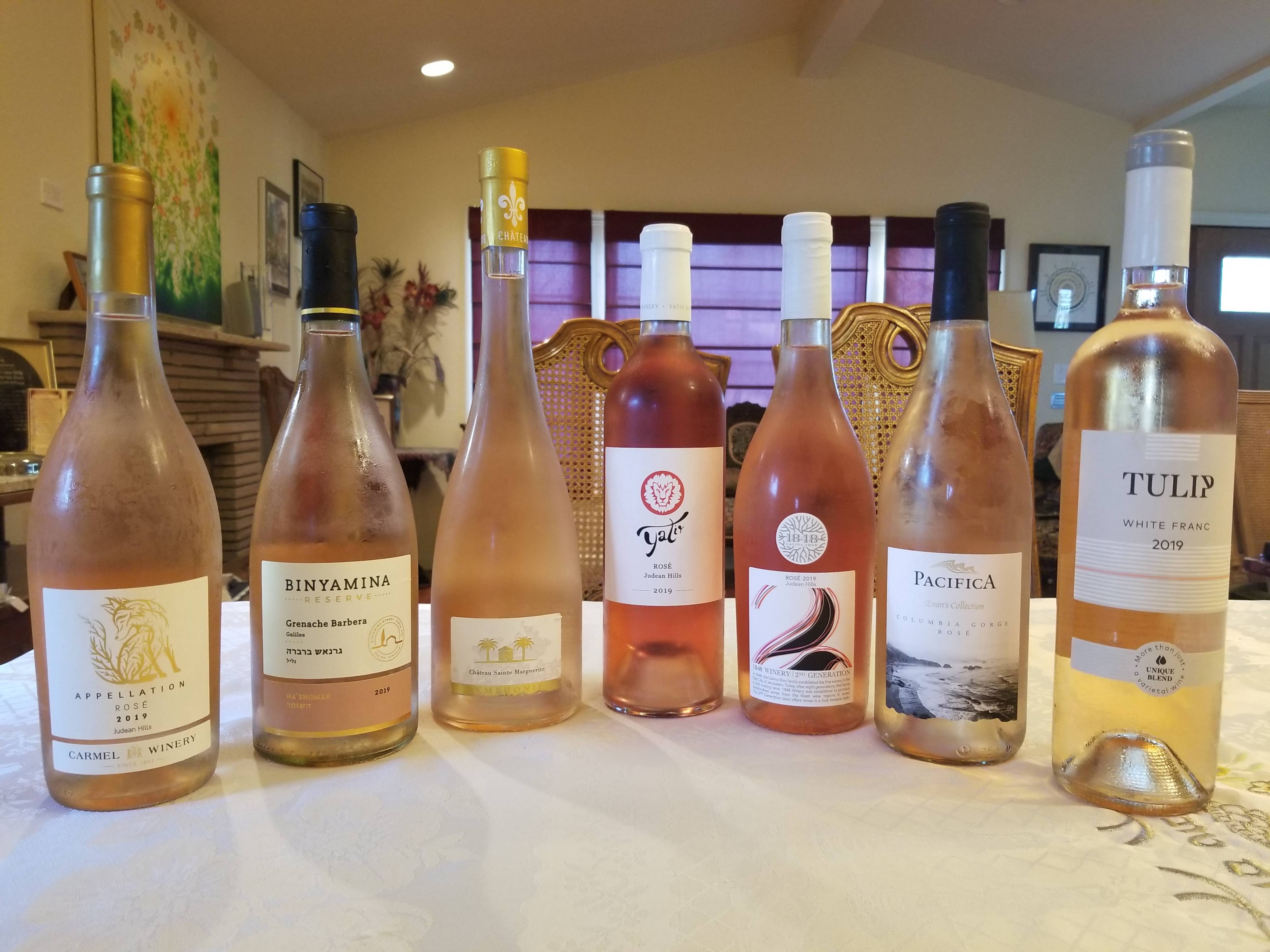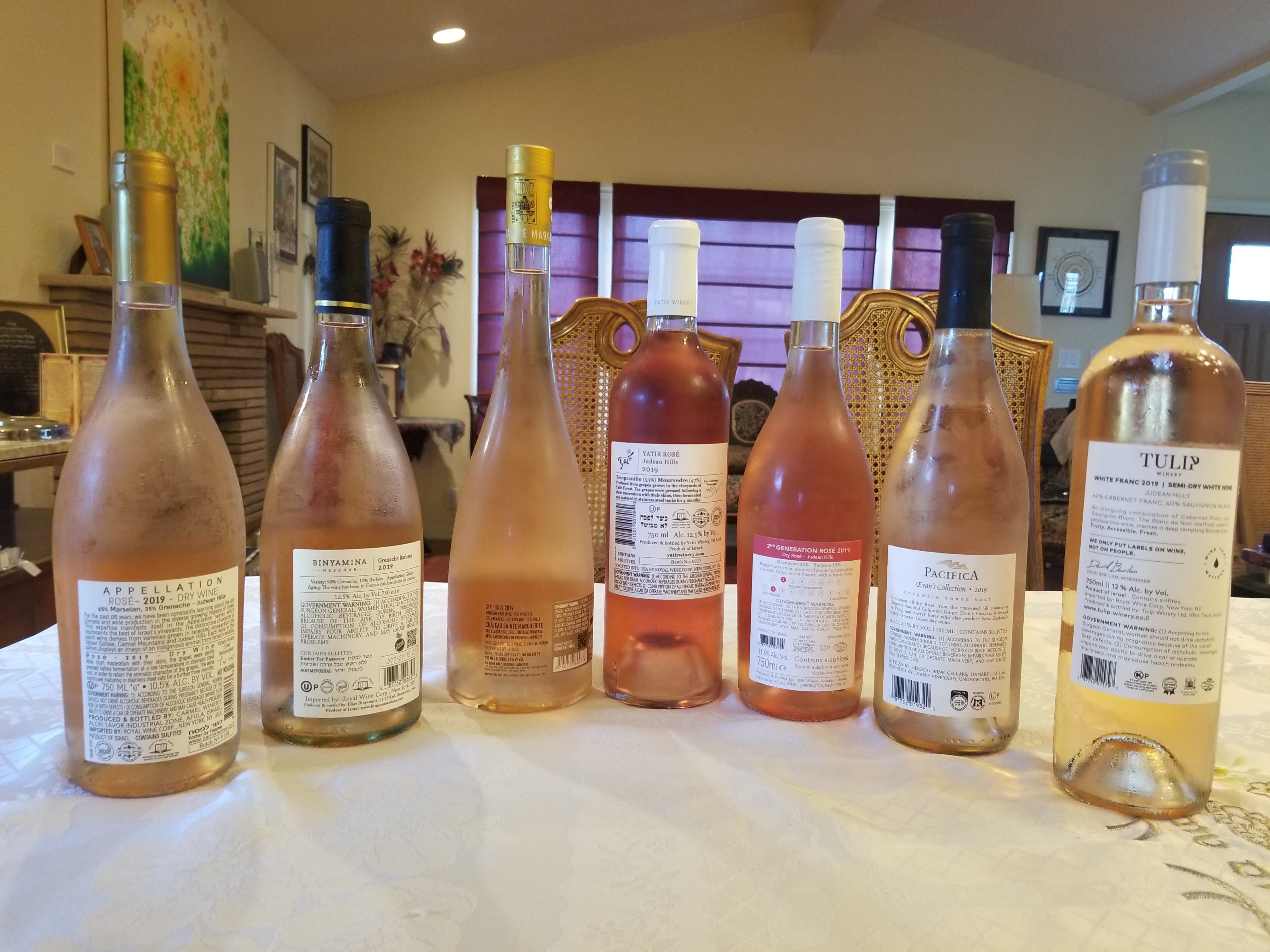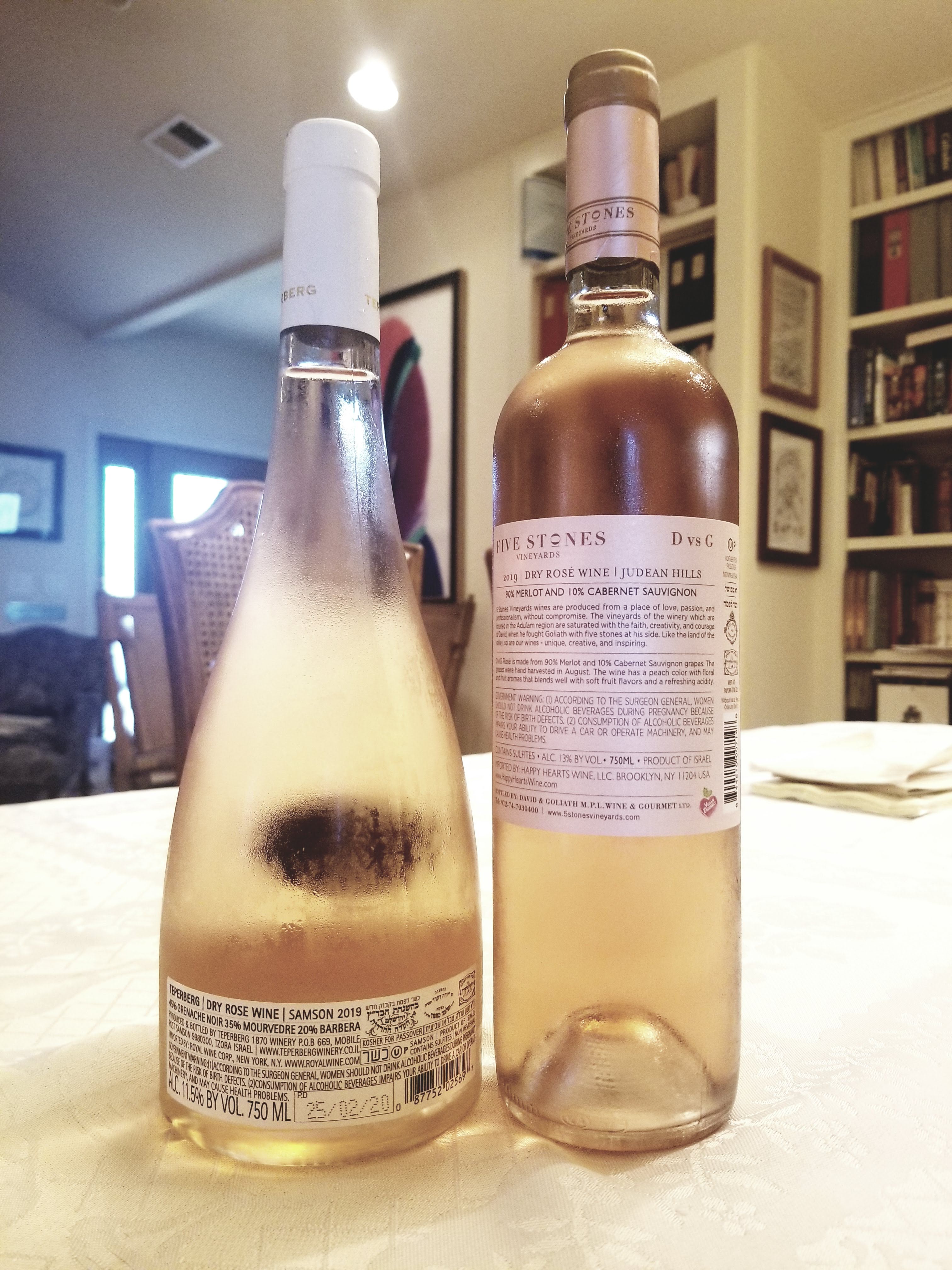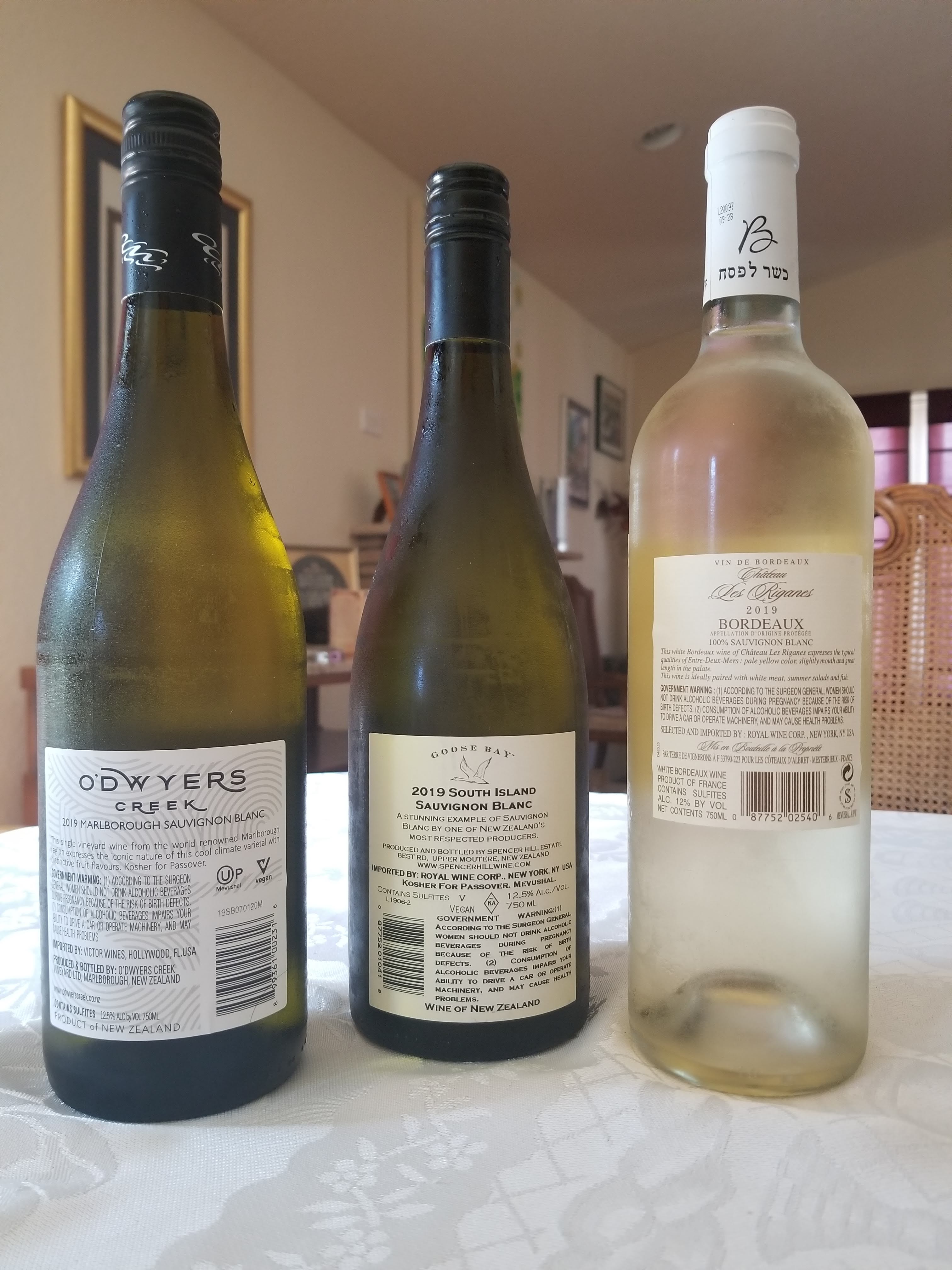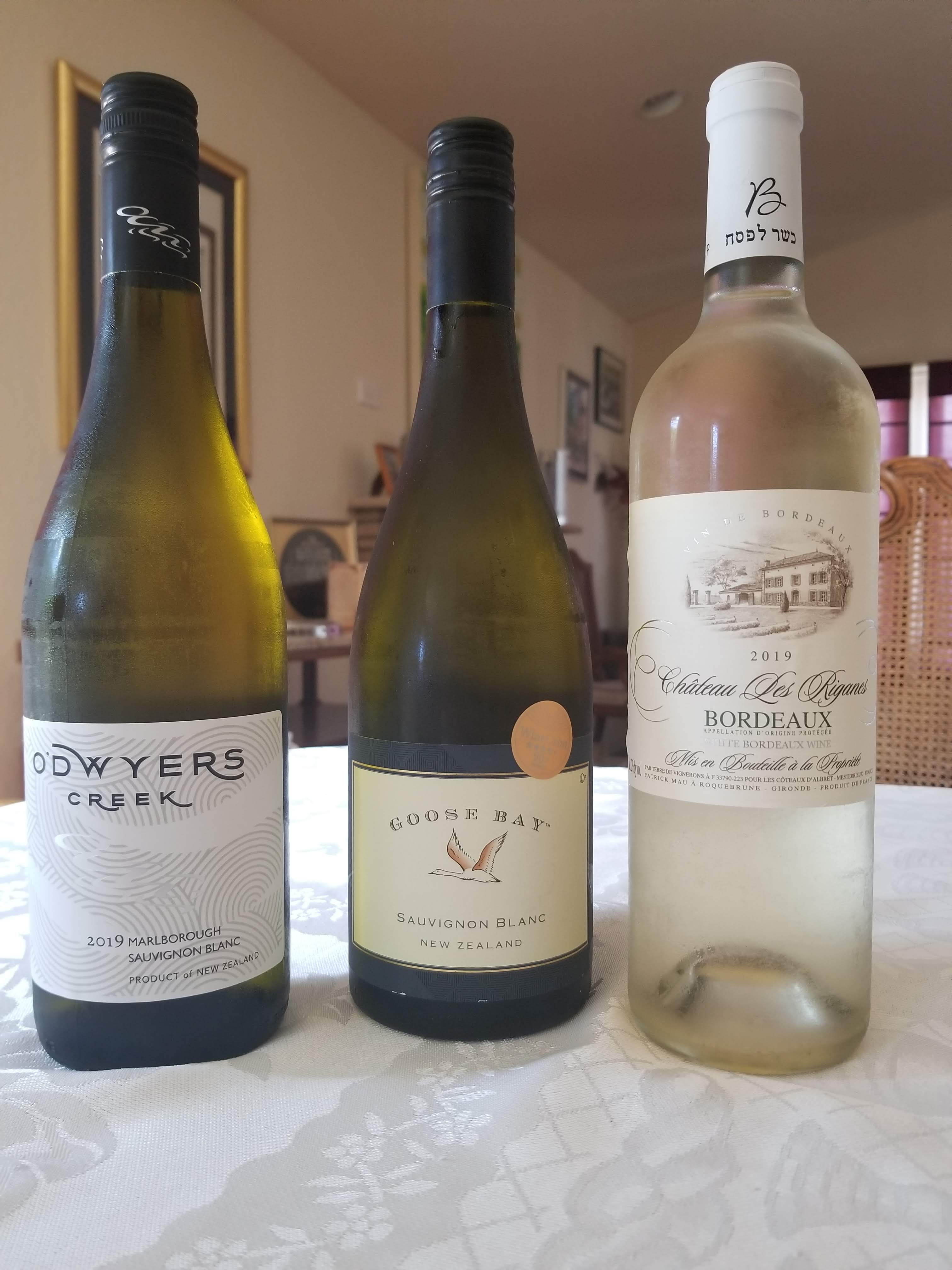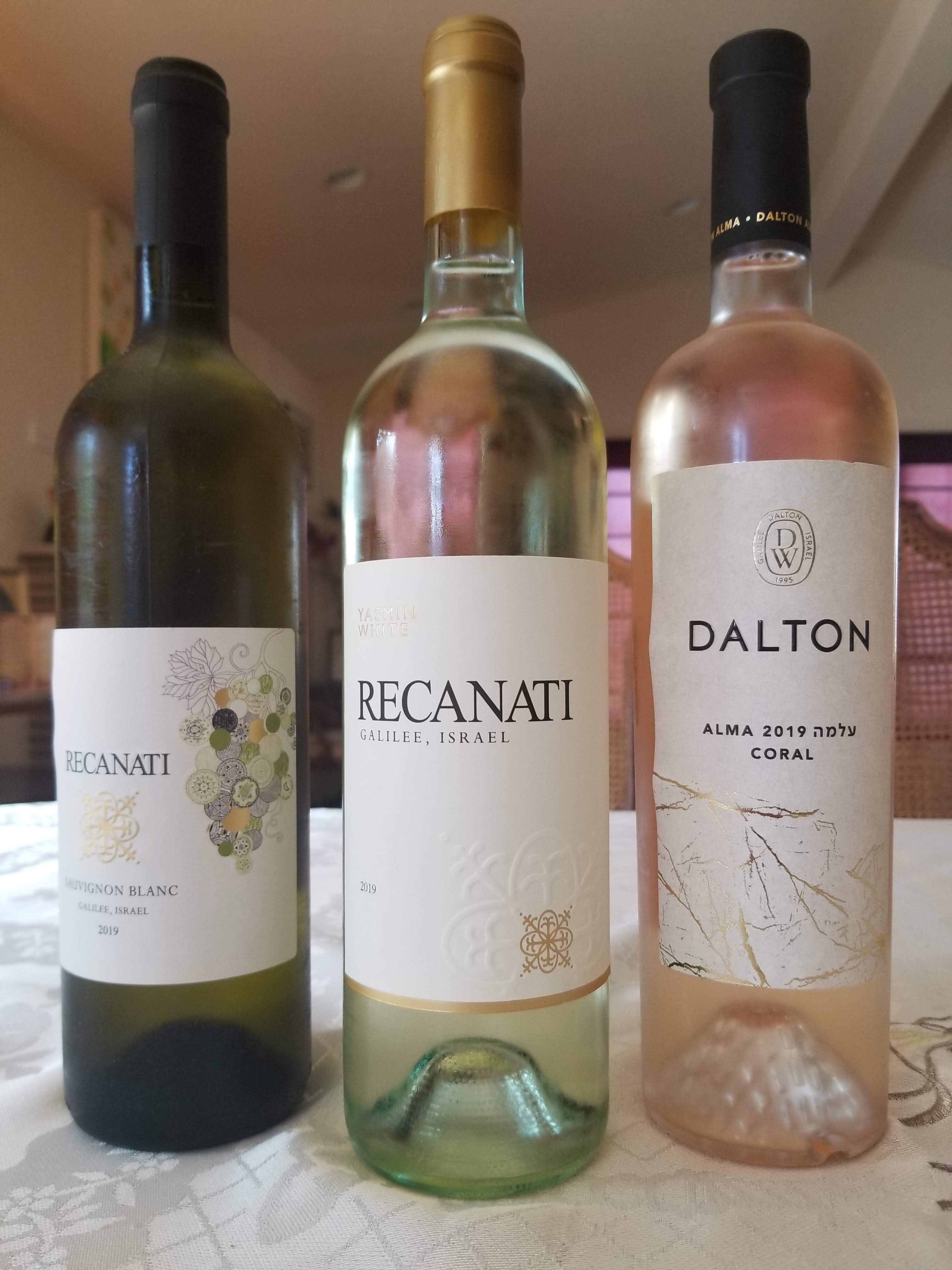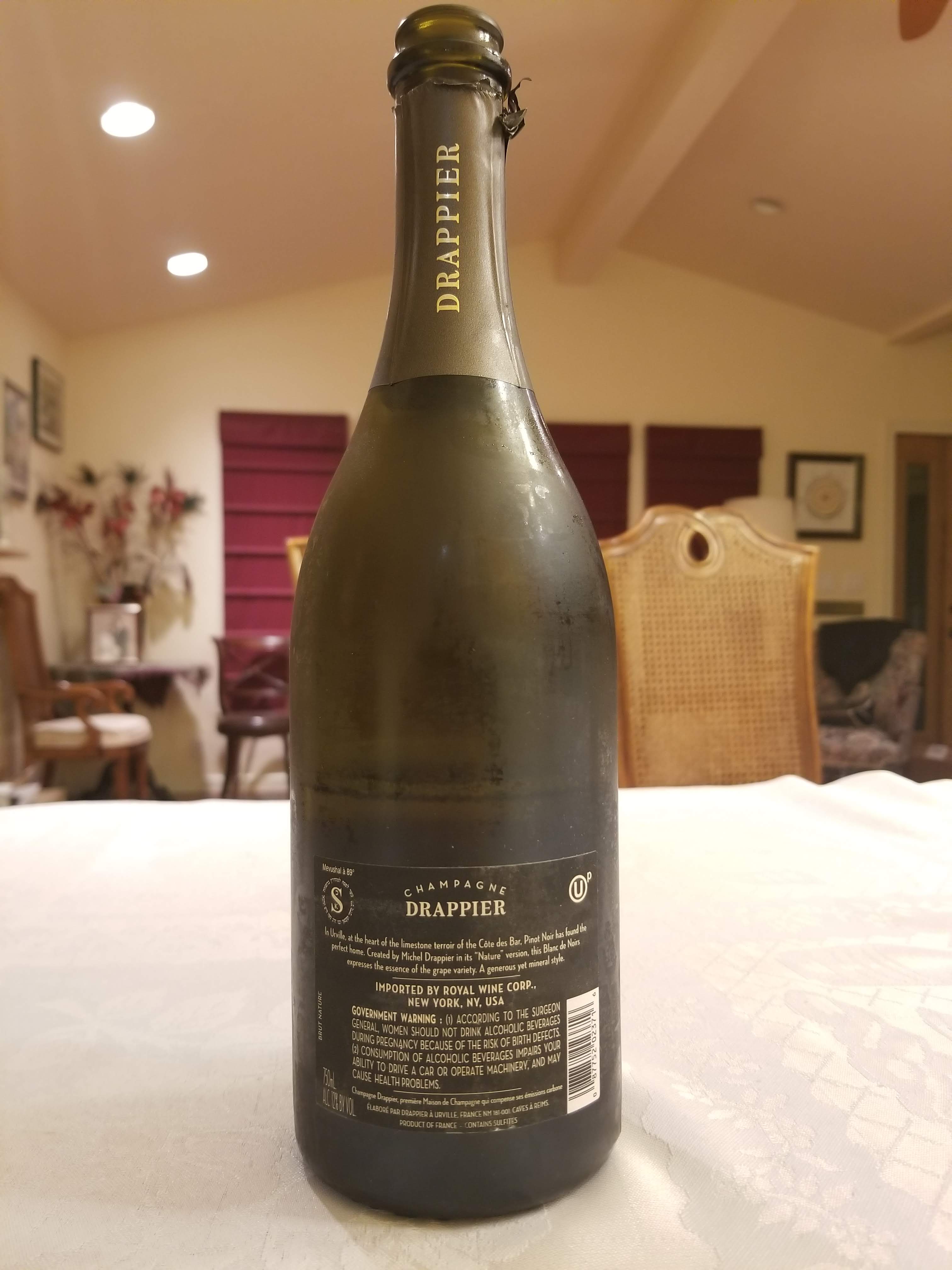Blog Archives
The 2019 Kosher rose season is open but I am underwhelmed at best
It is not yet summer and here in NorCal, it feels more like winter with these strange May storms with thunder and hail. Sorry, but in NorCal, we do not get thunder, it is very strange indeed! Anyway, enough with my meteorologist fanboy moment, the weather was not conducive for my last tasting here in San Jose with a group of folks, but Rose was on the docket so rose it was.
Rose wine in the non-kosher market is exploding – especially Rose wine from Provence; a wine region of France. Sadly, in the kosher wine market – that is not quite the case. I did not stress my previous statement with a suffix of AT ALL, even though I am not allowed to open a bottle of rose on my Shabbos table with guests – why? Well, that is simple – no one will drink it!!
Even worse, is that wine manufacturers may well have jumped the shark! There will be some 60+ kosher roses available in the USA this year! That may not sound like a lot, but when all you had was Herzog White Zinfandel 10 years ago – it is insane. The first high-end rose was Castel’s 2009 rose and that was only 10 years ago. Back then, there were few to no real Rose wine options, other than a handful of Israeli wines and almost no French Rose made it here. Now we will have tons of Rose, and I really think the real question here is will people drink it all?
Also, I want to bring up a topic I rarely talk about – price! Yeah, I hear you, Avi Davidowitz, of KosherWineUnfiltered, please quiet down, gloating does not suit you – (smiley face inserted here). The prices of Rose wines have gotten out of control. QPR (Quality to Price Ratio) has become nonexistent, essentially here in the USA, for the kosher rose market. Finally, I am sorry, but I really feel that wineries were either horribly hampered in some way with the 2018 rose vintage, or honestly, they just threw in the towel, The 2018 vintage is the worst one in the last 10 years. We have hit Peak Rose, we really have. Peak X is when X becomes so default within the construct of our lives, and the quality and quantity of X peaks. Clearly, calling peak kosher rose is a subjective call, but look around. The roses of 2018 feel commodity at best, they feel rushed, no real care, rhyme, or reason. They feel like we have peaked. They are nowhere near 2017, and 2017 was nowhere near 2016, and so on. I am sure next year may be another peak rose, and to be honest, many have called for Peak Oil and Peak TV, so maybe I am just projecting what I see around me, but this year’s crop of roses feel half-hearted pure cash cows, and really without love behind them.
As always, I will be chastised for my opinions, my pronouncements, and I am fine with that. This is wakeup post, there may be ONE or two roses I would buy, but respectfully, given the prices, I would rather buy, the 2018 Covenant Sauvignon Blanc, 2017 O’dwyers Sauvignon Blanc, the 2018 Goose Bay Sauvignon Blanc, and so on. Throw in the 2018 Tabor Sauvignon Blanc and the 2018 Or Haganuz Amuka Blanc Blend, and really who cares about a rose?
I was thinking about going with the title: 2018 kosher roses, thanks, but who cares? Because that is how I feel. This vintage is a massive letdown, prices are too high, quality has hit rock bottom, and overall professionalism, IMHO, has gone along with the quality. Wineries have been getting away with less and less quality for years, raising prices, and this is the worst I have seen in the rose market overall. So, yeah, who cares?
Wine Color
What is rose wine? Well, simply said, a rose is a wine that can best be defined as the wine world’s chameleon. Where white wine is a pretty simple concept – take white grapes, squeeze them, and you get clear to green colored juice. Yes, the white grape juice is clear – well so is red grape juice, but more on that in a bit. Read the rest of this entry
The 2018 Kosher rose season is open – part 3
Well, after the first post I stated that I would be doing this rose wine post a few times. The subsequent posts would have the original content, and the newly revised or added rose wines as well. Well, this is part 3, and I hope this is the last one! My schedule was insane, but it is now slowing down, thankfully, so I hope to be adding more posts as well!
It is still officially Summer, which means it is Rose time! Rose wine in the non-kosher market is exploding – especially Rose wine from Provence; a wine region of France. Sadly, in the kosher wine market – that is not quite the case. I did not stress my previous statement with a suffix of AT ALL, even though I am not allowed to open a bottle of rose on my Shabbos table with guests – why? Well, that is simple – no one will drink it!!
Even worse, is that wine manufacturers may well have jumped the shark! There will be some 50 dry-ish kosher roses available in the USA this year! That may not sound like a lot, but when all you had was Herzog White Zinfandel 10 years ago – it is insane. The first high-end rose was Castel’s 2009 rose and that was only 9 years ago. Back then, there were few to no real Rose wine options, other than a handful of Israeli wines and almost no French Rose made it here. Now we will have tons of Rose, and I really think the real question here is will people drink it all?
Wine Color
What is a rose wine? Well, simply said, a rose is a wine that can best be defined as the wine world’s chameleon. Where white wine is a pretty simple concept – take white grapes, squeeze them, and you get clear to green colored juice. Yes, the white grape juice is clear – well so is red grape juice, but more on that in a bit.
White wine is not about color – almost all color in a white wine comes from some oak influence of some sort. So, an unoaked Sauvignon Blanc or Pinot Gris can sometimes look almost clear, depending on the region and how the wine was handled. Now oaked Chardonnay, of course, is what most people use as an example of a dark white wine. As the Wine Folly linked above states, different wine regions oak their Chardonnay differently and as such, they are sold with different hues from the start. With age, the wine changes color and the light gold moves to darker gold shades.
The only real exception to the stated rule above – that white grape juice without the influence of oak is somewhere in the clear to green color spectrum, is – orange wines. We have spoken about orange wines – mostly thanks to Yaacov Oryah. Outside of Yaacov’s work there really is no orange wine in the kosher world to speak about. Orange wine is made exactly like red wine, which means that the clear grape juice is left to sit on the yellowish to dark yellow grape skins (depending upon what varietal is used to make the orange wine).
Red wine juice – straight from the grape comes out the same color as white grapes. You see the juice from grapes is mostly clear to greenish in color. The red wine color comes from macerating the juice on the grape skins. The longer the juice sits on the grape skins (wine must) the redder in color the wine becomes until it reaches its maximum red color potential.
The only real exception to the rule of a grape’s juice color is the Teinturier varieties. The grapes are called Teinturier, a French language term meaning to dye or stain. The list of grapes whose juice is actually red colored is long – but the list of kosher wine options that is a wine made from these grapes – is the Herzog Alicante Bouschet. The Gamay de Bouze is not a normal Gamay grape, it is one of those grape mutations that are very red in nature. Read the rest of this entry
The 2018 Kosher rose season is open – part 2
Well, after the first post I stated that I would be doing this rose wine post a few times. The subsequent posts would have the original content, and the newly revised or added rose wines as well. Well, this is part 2, and there will be at least a part 3 or maybe a part 4, such is life. My schedule is insane right now (not complaining in any way), so when I can grab a few moments to update the roses I have had, I take it with both hands!
It is still officially Spring, which means it is Rose time! Rose wine in the non-kosher market is exploding – especially Rose wine from Provence; a wine region of France. Sadly, in the kosher wine market – that is not quite the case. I did not stress my previous statement with a suffix of AT ALL, even though I am not allowed to open a bottle of rose on my Shabbos table with guests – why? Well, that is simple – no one will drink it!!
Even worse, is that wine manufacturers may well have jumped the shark! There will be some 50 dry-ish kosher roses available in the USA this year! That may not sound like a lot, but when all you had was Herzog White Zinfandel 10 years ago – it is insane. The first high-end rose was Castel’s 2009 rose and that was only 9 years ago. Back then, there were few to no real Rose wine options, other than a handful of Israeli wines and almost no French Rose made it here. Now we will have tons of Rose, and I really think the real question here is will people drink it all?
Wine Color
What is a rose wine? Well, simply said, a rose is a wine that can best be defined as the wine world’s chameleon. Where white wine is a pretty simple concept – take white grapes, squeeze them, and you get clear to green colored juice. Yes, the white grape juice is clear – well so is red grape juice, but more on that in a bit.
White wine is not about color – almost all color in a white wine comes from some oak influence of some sort. So, an unoaked Sauvignon Blanc or Pinot Gris can sometimes look almost clear, depending on the region and how the wine was handled. Now oaked Chardonnay, of course, is what most people use as an example of a dark white wine. As the Wine Folly linked above states, different wine regions oak their Chardonnay differently and as such, they are sold with different hues from the start. With age, the wine changes color and the light gold moves to darker gold shades.
The only real exception to the stated rule above – that white grape juice without the influence of oak is somewhere in the clear to green color spectrum, is – orange wines. We have spoken about orange wines – mostly thanks to Yaacov Oryah. Outside of Yaacov’s work there really is no orange wine in the kosher world to speak about. Orange wine is made exactly like red wine, which means that the clear grape juice is left to sit on the yellowish to dark yellow grape skins (depending upon what varietal is used to make the orange wine).
Red wine juice – straight from the grape comes out the same color as white grapes. You see the juice from grapes is mostly clear to greenish in color. The red wine color comes from macerating the juice on the grape skins. The longer the juice sits on the grape skins (wine must) the redder in color the wine becomes until it reaches its maximum red color potential.
The only real exception to the rule of a grape’s juice color is the Teinturier varieties. The grapes are called Teinturier, a French language term meaning to dye or stain. The list of grapes whose juice is actually red colored is long – but the list of kosher wine options that is a wine made from these grapes – is the Herzog Alicante Bouschet. The Gamay de Bouze is not a normal Gamay grape, it is one of those grape mutations that are very red in nature. Read the rest of this entry
Seven Kosher Viognier Wines
Viognier (pronounced Vee-Ohn-Yay) is a very special grape and one that must be handled with great care. The Viognier grape/wine is a special treat. It is a wine that has distinct characteristics: perfume, floral notes, and acidity, but it is also a very picky grape. It is very easy to lose to mold and because of this wineries will plant roses next to the grape vines to act as a canary for detecting mildew early on. The grape needs to be picked late otherwise; it does not generate the classic perfume that we are used to seeing in Muscat and Riesling wines. The winemaker has many choices with how he/she wants to manage the grapes. The winemaker can allow the wine to go through malolactic fermentation (to give it a bit more weight) or let the wine lie in the must (to give it more perfume) or to let it have a bit of wood to give it roundness. With all the choices and difficulties that Viognier wines have, they rarely meet expectations and are, therefore, not one of the current popular white wines. Finally, Viognier is not meant for long storage – hence the VERY early release dates on these wines, also the wine should have the acidity, fruit, and perfume to make it a real winner. By default, the Viognier grape is lower in acidity than other white varietals, which makes for a wine that is not meant for cellaring, at least not yet in the kosher market.
The most famous of Viognier wines come from Condrieu AOC and though they are highly desired, even there they are not always winners. The climate in Condrieu is colder than much of the Rhone, and its soil is made up of a porous, drainable granite, chalk, mica, and deposits of gneiss. The area is known as the original mother of Viognier and in the AOC, the only legal grape is Viognier.
While I really liked the 2016 Psagot Viognier last year, now it is losing its steam and it acid is falling off, making for a fetter more round wine. Dalton, in the past, threw so much oak at the wine that it was built to last longer. Psagot and Kos Yehuos both do not throw that much oak at the wines and they release them early on. Psagot has a fascinating way to get acidity and perfume. Yaacov Oryah, picks around 80% of the Viognier early, for acid, minerality and low alcohol, and 20% later in the season, for perfume.
I really enjoyed the 2017 Covenant Israel Viognier, it was varietally true, and really lovely. The sad fact was that I could not find it in Israel, the week before Passover, and I tried almost every wine store in and around Tel Aviv and Jerusalem! I had to come to the USA to taste it, and it is a lovely wine indeed!
Still, of all of them, the Kos Yeshuos Viognier is showing a more old world and mineral style than the perfume madness of the Israeli options. It is sad that there are so few options in the world of Viognier. Galil has some, and they are OK but pretty average. Same with the 2016 Yatir Viognier, it was muted to me. The 2016 Dalton Viognier was nice, but it is an oak monster, and that is an acquired taste.
Now I stated that there were 7 Viognier wines here in the title, and while there are 5 varietal Viognier wines, the other two are blends. The first of the blends is the 2017 Shirah Vintage Whites which is a blend of 55% Viognier and 45% Chardonnay, from the Murmur Vineyard in Santa Maria Valley. The last of the blends is the 2017 Teperberg Fermitage White, Inspire.
The wine notes follow below – the explanation of my “scores” can be found here:

2017 Covenant Israel Viognier, Blue C – Score: 90
Classic viognier notes with crazy rich floral notes, with rich saline, lovely peach, and some oak. The mouth on this medium bodied wine is really fun and showing a lovely oily texture, with rich weight and more fun saline, followed by apricot rolled in the grass, with floral notes. The finish is sweet and ripe and fresh with tart notes of stone fruit, with lemongrass and flint. Bravo!
2017 Psagot Viognier: 89 to 90
This year’s vintage is leaner than last year’s vintage, but also more light in style and focus. The wine starts off very ripe and needs time to come around, give this wine time. The nose starts off with ripe fruit notes of pineapple juice, honeycomb, really ripe, with cloves, allspice, peach marmalade, and apricot, and stone fruit. With time the nose turns to nice mineral notes, backed by peach marmalade, wonderful peach jam, and lovely hay, quince jam. The mouth is more round and fat than I would have hoped, with orange and nectarines, still, it is well structured. With slate, saline, and pith galore. Nice.
2017 Kos Yeshuos Viognier – 92 (QPR)
Do not cool this wine too much, it likes 30 min in the fridge and no more.
This wine has evolved over the past 6 months. Gone is the fruity nose and now the nose is pure flint, yeast, smoke, and really fun straw and mineral, with peach and honey in the background. The mouth on this medium bodied wine is ripe for sure, but really well balanced and showing lemongrass, with a rich oily coat that covers the mouth, well focused with rich acidity, nice mineral, great fruit pith, apricots, peach, and lemon, with rock, and grass. The finish is long and acidic, with enough complexity to grab your attention and keep it throughout the finish with lovely white rose tea, sweet spices, notes of fresh lavender, crazy saline lingers super long, with cinnamon, and cloves. Bravo!
2016 Psagot Viognier – Score – 88
So last year this wine was very ripe, now the nose is showing nice funk, with hay, straw, and honeyed notes. last year this wine was an acid bomb, now the wine has lost that rich acidity and now it is well balanced, with good fruit pith, and green notes, and not much else. Sadly, this wine is losing its grip and should be drunken ASAP. DRINK UP!
2017 Teperberg Destitage White, Inspire – Score: 89
This wine is a blend of Viognier, Sauvignon Blanc, and French Colombard. The nose on this wine is very floral and classically inclined to Viognier with its intense peach bomb notes, with white cherry notes, and sweet Oak. The mouth on this medium bodied wine is oily and tactile, with a rich weight from the Viognier and Colombard fruit, with sweet Guava and nectarines, followed by with orange notes, The finish is sweet and tart and fun overall, with good acid and floral notes. Nice!
2017 Shirah Vintage Whites – Score: 91 (QPR)
Another winner from Shirah with a blend of 55% Viognier and 45% Chardonnay. The nose on this wine starts off really fun and funky, showing straw and rich mineral, with sweet peach, rich ripe guava, and apricot. The mouth on this wine is really fun, rich, layered, well balanced, oily and textured, and so professionally made, with lovely smoke, oak, with rich apple, dried quince and with fresh focus and lovely weight and viscosity. The finish is crazy and dry, with sweet notes of fig, sweet lemon tea, with intense mineral and lovely pith with a citrus background. Bravo!!
2016 Dalton Viognier, Reserve – Score: 89
The nose is classic Viognier, with peach, too much oak, showing good apricot, sweet rose hips, and a perfume of honeysuckle, and orange blossom. The mouth is medium bodied, with a nice almost oily mouthfeel, showing nice weight, with good notes of summer fruit, with just enough acid, wish there was more, with lovely pear and nectarines. The finish is long and balanced with less acid than before, still too much oak, lovely mineral, slate, and more floral notes. Drink up!



